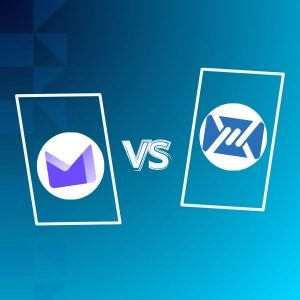Have you hired new colleagues? You must have high expectations for them. However, before putting them into a challenging situation, it’s essential to introduce them to their new colleagues. You can do this by writing a welcoming email to the team.
Here’s how to introduce new employees to the team and make sure everyone starts off right.
Why is it important to write a welcome to the team email?
Why bother writing a new employee introduction email in the first place? Wouldn’t it be easier to send a memo announcing that so-and-so will be working with them from now on?
Well, for some businesses, that might be sufficient. But unless your company has a high turnover rate, and people stay for only a few months, new employees tend to build stronger connections with their team members over time. This can make it challenging for them to adapt to any changes.
For instance, let’s say, Marta, a well-liked employee who has been with your company for seven years, decides to leave. Whoever you bring in to replace her will need support in filling her shoes and integrating quickly into the team.
To ease this transition for everyone, including the new employee and the existing team members, writing a welcome to the team email can be a thoughtful and helpful gesture
What should be the subject line?
A new team member introduction email has two main purposes:
- Introducing a new employee.
- Ensuring the message is clear enough, giving all the necessary information in a concise announcement.
That is why the subject line of the email for a new employee is crucial. It should be straightforward and clear.
A simple “Welcome to the Team” followed by the new team member’s name will be sufficient for the introduction email.
You can add anything else in the email body, like what position they’ll take when they start.
Here are some email subject line examples that you can use when introducing a new colleague:
- Welcome to the team [First Name, Last Name]
- Please welcome [First Name, Last Name] to the team
- Welcome aboard [First Name, Last Name]
- Thank you for joining our team [Employee Name]
- Say hi to our new [Position], [First Name]
- Please welcome our latest teammate, [Employee Name]
And so on.
What to include in a welcome to the team email message?
What should you include in your “welcome to the team” email message?
The content will vary based on the situation, your company, department, position, and other factors. However, the overall email should include the following elements:
- A warm greeting and expression of excitement for the new team member. Starting a new job is already quite stressful, so the least you can do is to be welcoming and show a positive atmosphere for the team member.
- Their name and position. You also want to explain what the new teammate will be doing. You can briefly mention the employee’s background and experience, if relevant.
- When are they starting? Provide essential details about their start date, work hours, and any necessary onboarding information.
- Final thoughts and welcome. Conclude with a positive closing message, reiterating your enthusiasm for having them on board.
Learn more about email manners on our ultimate email etiquette guide.
New Employee Introduction Email Examples
With all that said, here are some new employee introduction email examples that you can use:
- Welcome to the team email example 1:
Hi Team,
I’m excited to introduce a new member to our [department] team. Please give a warm welcome to our new [position], [new employee name].
[New employee name] previously worked at [their previous company] as a [last position]. I believe their experience will be a valuable addition to our team.
[New employee name] will be working on [project] and will be responsible for [specific task(s)]. If you have any questions, feel free to reach out.
Once again, I’m thrilled to welcome [new employee name] on board. I hope you’ll all join me in making them feel at home.
- Welcome to the team email example 2:
Hey everyone!
I’d like to introduce our newest [position], [employee name], who will be joining us on [date].
[Employee name] previously worked for [company] on similar projects. I’m confident they’ll bring valuable experience to our team and contribute significantly to the success of our project.
If you have any questions about the project, please don’t hesitate to reach out to [employee name].
I’m sure you’ll all enjoy working with [employee name]!
- Welcome to the team email example 3:
Team!
I’m pleased to announce a new member of our team!
Starting [day], [employee name] will be joining [department] and our company.
[He/She] previously worked at [company] and will be bringing a ton of experience to [department], with which I’m sure they’ll help make this project successful.
They’ll be working closely with [name] to help them get settled quickly
Thanks,
Your name and position
Conclusion
To sum it up, when bringing in a new employee, there are two crucial aspects to consider: making them feel like part of the team and ensuring their smooth integration. Crafting a warm and sincere “welcome to the team” email can make a world of difference in achieving these goals.
By taking the time to introduce the new hire to their colleagues and expressing genuine excitement about their arrival, you set the stage for a positive and supportive work environment. It’s not just a formality; it’s a way to show that each team member is valued and appreciated.
Are you interested in knowing more about email communication? Check out our ultimate guide to make your emails professional.
Mailfence is an email service that provides secure and private emails. Sign up today!




